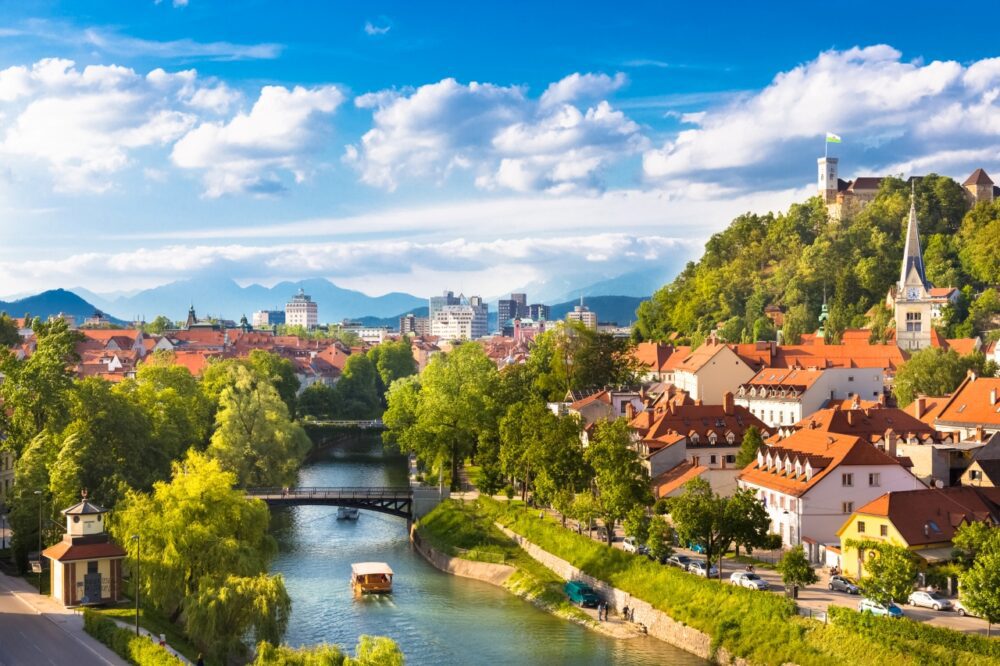
Is Ljubljana worth visiting? Without a doubt! The first time I arrived in Ljubljana, I was immediately charmed by its fairytale-like atmosphere. With its colourful buildings, leafy riverside promenades, and a castle perched on a hill, it felt like a city straight out of a storybook. As I strolled along the Ljubljanica River and stopped at cosy cafés, it became clear why Ljubljana is often called one of Europe’s greenest and most liveable capitals.
Nestled in the heart of Slovenia, Ljubljana is a small yet vibrant capital city that perfectly combines history, culture, and modern sustainability. Its compact Old Town is a delight to explore, filled with Baroque and Art Nouveau architecture, quirky bridges like the Dragon Bridge, and lively squares. Ljubljana is also a foodie haven, with a fantastic selection of farm-to-table restaurants and buzzing open-air markets. Beyond the city itself, its central location makes it an ideal base for exploring Slovenia’s natural wonders, from Lake Bled to Triglav National Park.
But is Ljubljana worth visiting for you? In this blog post, we’ll explore the top 10 reasons why Ljubljana should be on your travel list, from its picturesque Old Town to its eco-friendly vibe. Plus, we’ll share travel tips to help you make the most of your visit to this hidden European gem. Keep reading to discover why Ljubljana might just steal your heart.
Table of Contents
Pros – Reasons You Should Visit Ljubljana
1. A Fairytale-Like Old Town with Stunning Architecture
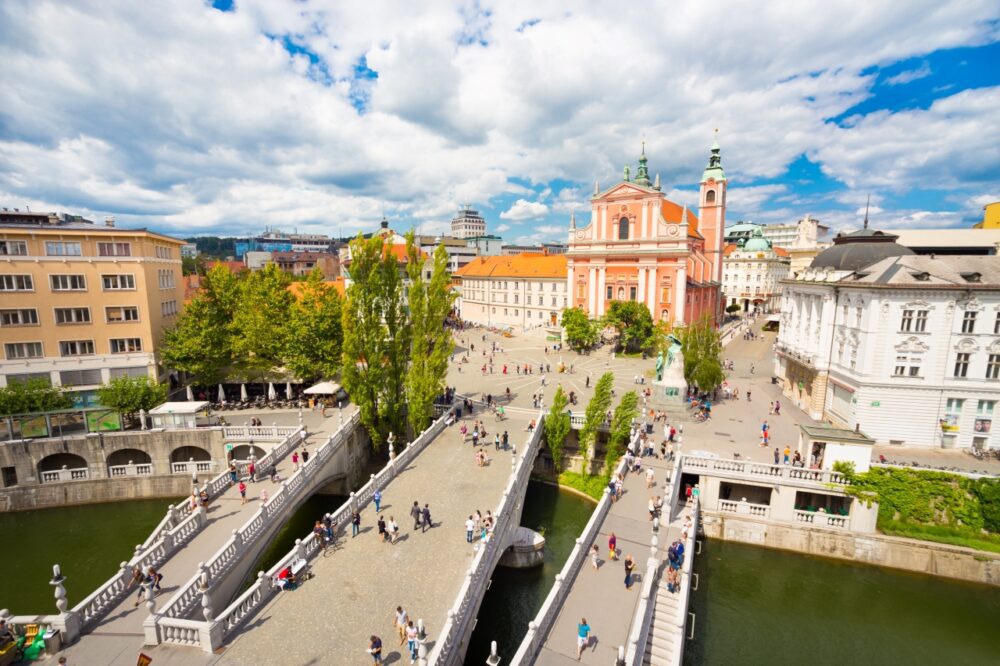
Ljubljana’s old town feels like something straight out of a storybook, with its charming cobblestone streets, colourful buildings, and beautiful bridges crossing the Ljubljanica River. The city’s architecture blends Baroque, Renaissance, and Art Nouveau styles, giving it a distinctive and elegant look. Unlike many European capitals, Ljubljana’s old town is compact and completely pedestrianized, making it a joy to explore on foot without worrying about cars.
I loved strolling along the riverbanks, where outdoor cafés spill onto the streets and local musicians add to the relaxed atmosphere. The Prešeren Square, with its striking pink Franciscan Church, is one of the city’s most picturesque spots, while the Triple Bridge, designed by the famous Slovenian architect Jože Plečnik, is a unique landmark worth admiring. Whether you’re visiting in the sunny warmth of summer or during the magical Christmas season, the old town always has a special charm.
2. Ljubljana Castle Offers Incredible Views of the City
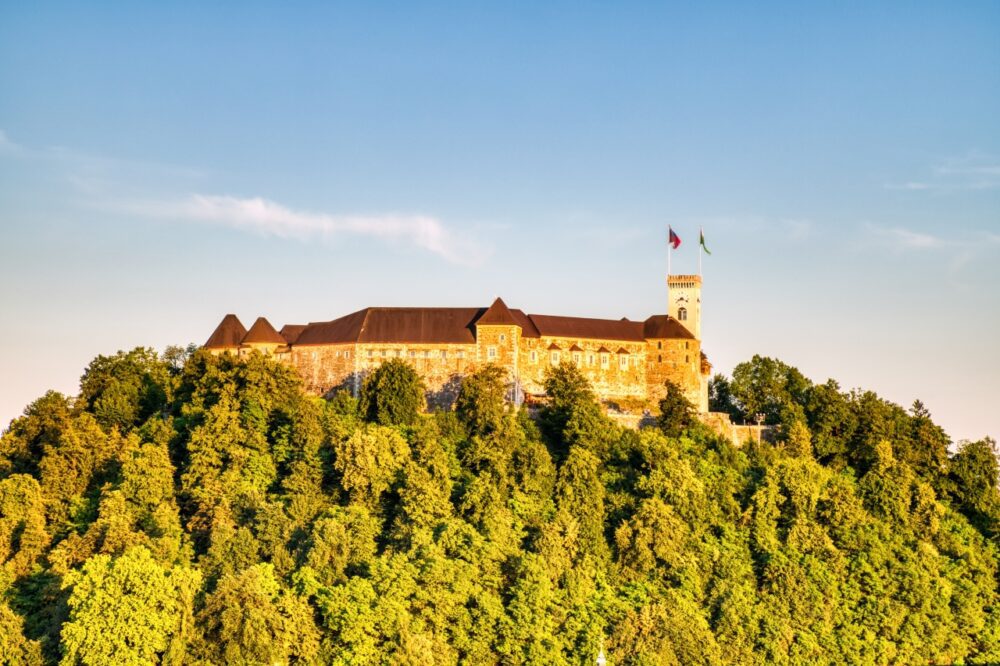
Perched on a hill overlooking the city, Ljubljana Castle is one of the top attractions and provides some of the best panoramic views of the surrounding landscape. The castle dates back to the 11th century, but over time, it has been restored and transformed into a cultural and historical hub with exhibitions, restaurants, and an observation tower.
I took the funicular up to the castle, which was a fun ride, but the real highlight was climbing to the top of the watchtower. From there, you can see the entire city below, with the river winding through the rooftops and the distant Julian Alps on the horizon. It’s a fantastic spot for photography, especially at sunset. The castle also hosts cultural events, film screenings, and medieval re-enactments, adding to the experience.
3. One of the Greenest and Most Sustainable Capitals in Europe
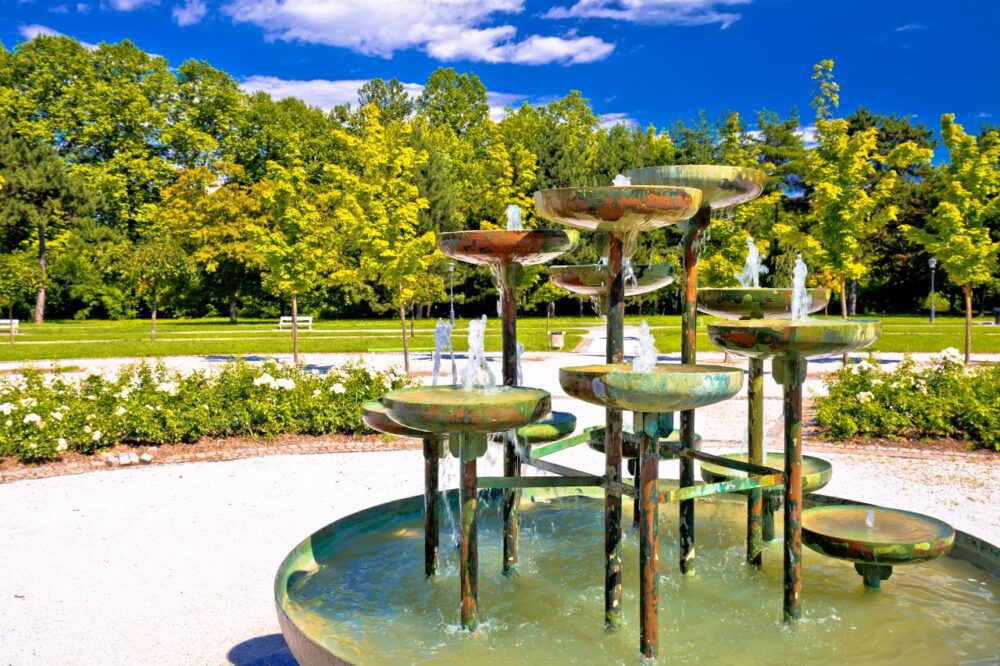
Ljubljana has won numerous awards for being one of the most eco-friendly and sustainable cities in Europe. It was named the European Green Capital in 2016, thanks to its extensive pedestrian zones, excellent cycling infrastructure, and commitment to protecting its natural surroundings. The city centre is almost entirely car-free, making it incredibly peaceful and clean compared to other European capitals.
I was impressed by how much green space there is within the city. Tivoli Park, the largest park in Ljubljana, feels like an oasis of nature right next to the old town, perfect for a morning walk or an afternoon picnic. The Ljubljanica River, which runs through the city, is lined with trees and walking paths, making it an ideal spot for a relaxing stroll. If you love cities that prioritize sustainability and quality of life, Ljubljana is a refreshing destination.
4. A Relaxed and Laid-Back Atmosphere
Unlike many capital cities, Ljubljana never feels rushed or chaotic. It has the cultural and historical appeal of a major European city but with the friendliness and relaxed vibe of a small town. There’s no sense of urgency here—locals take their time enjoying coffee by the river, riding bicycles through the streets, and gathering in open squares for conversation.
I spent an entire afternoon just sitting at a riverside café, watching the world go by, and it felt like time slowed down. Unlike the crowds and overwhelming pace of larger cities like Paris or Rome, Ljubljana offers a more intimate and stress-free experience. Whether you’re exploring the markets, chatting with locals, or simply wandering through the streets, the city’s relaxed energy makes it a great place to unwind.
5. Fantastic Food Scene with Local and International Flavors
Ljubljana’s culinary scene is a mix of traditional Slovenian flavours, Italian influences, and modern international cuisine. The city’s central market, designed by Jože Plečnik, is a great place to sample local produce, cheeses, and fresh baked goods. Slovenian food is hearty and delicious, with dishes like štruklji (rolled dumplings), kranjska klobasa (Carniolan sausage), and potica (a sweet nut-filled pastry).
One of the best meals I had was at a cosy restaurant serving jota, a Slovenian stew made with sauerkraut, beans, and potatoes. If you’re a wine lover, Slovenia produces excellent wines that often go unnoticed outside the country, so ordering a glass of local Malvazija or Rebula is a must. The city also has a great café culture, with plenty of spots to enjoy expertly brewed coffee and people-watch for hours.
6. The Riverfront is One of the Prettiest in Europe
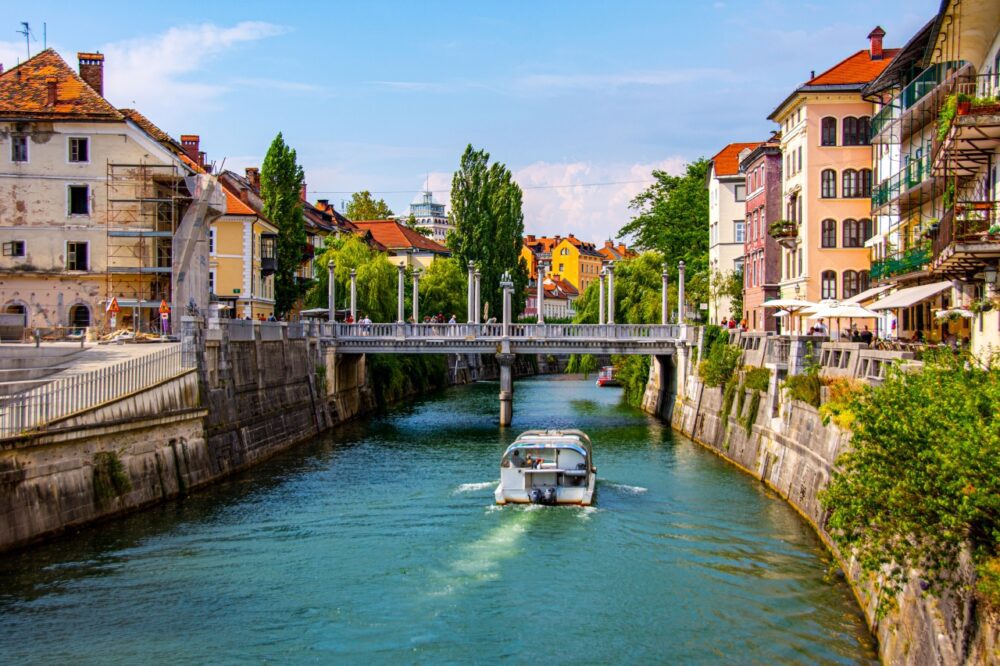
The Ljubljanica River runs through the heart of the city, and its picturesque waterfront is one of the most scenic and charming aspects of Ljubljana. Lined with pastel-coloured buildings, lively cafés, and stone bridges, the riverfront is the perfect place for a leisurely walk, a boat ride, or a relaxed evening drink.
One of my favorite experiences was taking a short boat tour along the river, which offers a different perspective of the city’s landmarks. In the evenings, the riverbanks come alive with locals and visitors gathering at outdoor terraces, enjoying wine, and listening to street musicians. The reflections of the illuminated buildings in the water create an almost magical atmosphere.
7. Vibrant Art and Alternative Culture in Metelkova
For those who love street art and alternative culture, Metelkova is a must-visit. This former military barracks has been transformed into an artistic and cultural hub, covered in graffiti, mosaics, and sculptures. It’s a place where independent artists, musicians, and creative minds come together, hosting live performances, exhibitions, and underground parties.
I wandered through Metelkova during the day and was fascinated by the colourful murals and unusual sculptures. At night, the area turns into one of the city’s most unique nightlife spots, with music ranging from jazz to electronic beats. If you enjoy discovering the alternative side of a city, this is one of Ljubljana’s most interesting districts.
8. Affordable Compared to Other European Capitals
Ljubljana remains much more affordable than other major European capitals like Paris, London, or Vienna. Accommodation, food, and attractions are reasonably priced, making it an excellent destination for budget travellers. While prices have risen slightly as tourism has increased, it’s still possible to find great meals at a fraction of what you’d pay in Western Europe.
I stayed in a well-located guesthouse for far less than what a similar place would cost in other European cities. Public transport is also cheap, though you likely won’t need it much since the city is so walkable. If you want to experience a beautiful European city without spending a fortune, Ljubljana is a fantastic option.
9. Friendly and Welcoming Locals
Slovenians are known for being friendly and welcoming, and Ljubljana is no exception. While not everyone speaks fluent English, many people do, and they are happy to help with directions, recommendations, or just a friendly conversation. The hospitality in smaller restaurants and cafés feels warm and genuine, making visitors feel at home.
I had a great experience at a local bakery where the owner took the time to explain the different types of traditional pastries to me and even let me try a sample before I decided. That level of friendliness isn’t something you always find in big tourist destinations, and it’s part of what makes Ljubljana such a pleasant place to visit.
10. A Perfect Base for Exploring Slovenia’s Natural Wonders
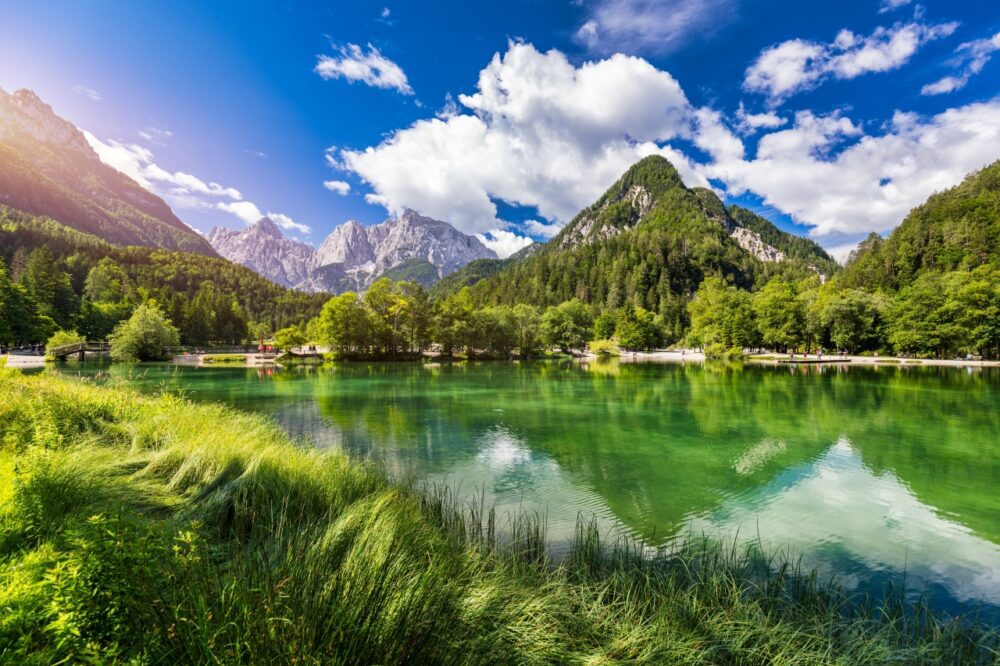
Ljubljana is ideally located for exploring some of Slovenia’s most breathtaking natural landscapes. Just a short drive away, you’ll find Lake Bled, with its famous island church and medieval castle perched above the water. Triglav National Park, Slovenia’s only national park, offers stunning alpine scenery, waterfalls, and outdoor adventures. The famous Postojna Cave and Predjama Castle are also easy day trips from the city.
I took a quick bus ride to Lake Bled and was blown away by the serene beauty of the area. The best part is that Slovenia is small, so almost anywhere you want to go is within a couple of hours of Ljubljana. If you love nature and outdoor activities, using Ljubljana as a base is a great way to see the best of Slovenia.
Cons – Things to Consider When Visiting Ljubljana
1. The City is Small and Can Be Fully Explored in a Short Time
Unlike larger European capitals such as Paris, Rome, or Berlin, Ljubljana is a relatively small city. While its charm lies in its walkability and intimate atmosphere, visitors may find that they can see most of the major attractions in just a couple of days. The old town, the castle, the riverfront, and Tivoli Park are all within close proximity, meaning there’s not as much to explore compared to sprawling metropolitan cities.
I spent three days in Ljubljana, and by the second afternoon, I had already covered most of the main sights. While it was still enjoyable to wander around, soak in the atmosphere, and revisit favourite spots, I found myself running out of new things to do within the city itself. Unless you plan on using Ljubljana as a base for day trips to places like Lake Bled, Postojna Cave, or Triglav National Park, you might feel like your visit is too short. If you enjoy destinations with endless neighbourhoods to explore and a long list of attractions, Ljubljana might not offer enough to keep you occupied for more than a few days.
2. The Weather Can Be Unpredictable and Rainy
Ljubljana experiences a mix of Mediterranean, Alpine, and continental climates, meaning the weather can be quite unpredictable. Summers can be warm and pleasant, but they often come with sudden rain showers, while winters are cold and damp. Spring and autumn are beautiful seasons to visit, but they can also bring grey skies and extended periods of rain.
I visited Ljubljana in mid-September, expecting mild weather, but ended up dealing with constant drizzle and overcast skies for most of my stay. The rain made some outdoor activities, like exploring Tivoli Park or walking along the riverfront, less enjoyable. Since Ljubljana doesn’t have as many indoor attractions as bigger cities, bad weather can limit what you can do. If you’re planning a trip, it’s best to pack an umbrella and a rain jacket just in case. Checking the forecast in advance and having a few rainy-day activities in mind, such as visiting museums or cosying up in a café, can help make the most of a trip during wet weather.
3. Limited Nightlife Compared to Other European Capitals
While Ljubljana has a decent selection of bars, pubs, and a few clubs, it does not have the same vibrant nightlife scene as cities like Berlin, Prague, or Barcelona. Most of the nightlife in Ljubljana is centred around the riverfront and Metelkova, an alternative cultural district with bars, street art, and occasional live music. However, compared to larger cities, there are fewer options for late-night entertainment, and many places close earlier than expected.
I went out on a Friday night expecting to find a buzzing party scene, but even the busiest bars and clubs had a more laid-back atmosphere rather than a high-energy nightlife vibe. Metelkova was interesting to experience, but if you’re looking for big nightclubs, electronic music events, or all-night parties, Ljubljana might not be the best destination. The city is better suited for relaxed evenings, wine bars, and intimate live music performances rather than a wild party scene.
4. Public Transport is Limited and Not Always Convenient
Ljubljana’s compact size means that most of the city can be explored on foot, but for those wanting to visit places outside the city centre, public transportation options are somewhat limited. Unlike other European capitals, Ljubljana does not have a metro or tram system. Instead, it relies on a network of city buses that can be confusing for tourists, especially since ticket purchases need to be made in advance using the Urbana card system rather than paying directly on the bus.
I found the bus schedules and routes a bit tricky to navigate, especially when trying to visit areas outside the old town. Since buses stop running relatively early in the evening, getting back from a late dinner or event required either a long walk or an expensive taxi ride. If you plan to explore beyond the main tourist areas, renting a bike or using rideshare apps might be a more convenient option. However, if you’re relying solely on public transport, be prepared for occasional inconvenience.
5. Some Attractions and Restaurants Close Early
One thing that surprised me in Ljubljana was how early some attractions, shops, and even restaurants close, particularly outside of peak tourist season. Many museums and historical sites shut their doors by 5 or 6 PM, meaning visitors have a limited window to explore them. Similarly, some restaurants close earlier than expected, making it difficult to find a late-night meal if you’re used to dining later in the evening, as is common in places like Spain or Italy.
I tried to visit a few smaller museums after 5 PM, only to find them already closed. Even some cafés and restaurants in quieter parts of the city had already stopped serving food by 9 PM. While there are still plenty of places open in the old town and along the river, visitors should plan their days carefully to avoid missing out on key attractions due to early closing hours. If you’re someone who likes to explore at a slower pace and prefers late dinners, it’s worth checking opening times in advance.
When to Visit Ljubljana
The best times to visit Ljubljana are spring (April to June) and autumn (September to October). During these seasons, the weather is mild, and the city’s riverside cafes and outdoor events come alive without the summer crowds. Summer (July to August) is ideal for enjoying Ljubljana’s vibrant festivals, like Ljubljana Festival, though it can be busier. Winters are quieter but magical, especially during December, when the Christmas markets and festive lights transform the city into a cosy wonderland.
How to Get to Ljubljana
Ljubljana Jože Pučnik Airport (LJU) is located 25 kilometres from the city centre and serves flights from across Europe via airlines like Lufthansa, easyJet, and Wizz Air. From the airport, the shuttle bus or taxis provide quick access to the city, taking around 30 minutes. Ljubljana is also well-connected by train, with direct services from neighbouring countries like Austria, Croatia, and Italy. Buses from cities like Zagreb, Venice, or Vienna are another affordable and scenic option for reaching Ljubljana.
Where to Stay in Ljubljana
Ljubljana offers a variety of accommodation options to suit every budget:
- Luxury: City Centre or Along the Ljubljanica River – Stay close to landmarks like Prešeren Square. Options include InterContinental Ljubljana, a five-star hotel with panoramic views, or Zlata Ladjica Boutique Hotel, offering stylish elegance by the river.
- Mid-range: Old Town or Tivoli Park Area – Ideal for exploring the city. Consider Urban Boutique Hotel, combining comfort and modern design, or Hotel Lev, located within walking distance of the main attractions.
- Budget: Metelkova District or Hostels in the Centre – Affordable choices like Celica Art Hostel, set in a former prison, or small guesthouses provide charm and value.
Getting Around Ljubljana
Ljubljana’s compact size makes it easy to explore on foot, with attractions like Ljubljana Castle, Prešeren Square, and the Triple Bridge all within walking distance. For longer distances, the city’s LPP public transport system, including buses, is affordable and efficient, with single tickets or day passes available. Cycling is particularly popular, with the BicikeLJ bike-sharing system providing a budget-friendly way to explore the city’s flat terrain and green spaces like Tivoli Park. Taxis and ride-hailing apps are available but less necessary due to the city’s walkability.
How Long to Spend in Ljubljana
Two to three days is perfect for experiencing Ljubljana’s highlights, including Ljubljana Castle, the picturesque riverside, and the National Gallery. This allows time to enjoy a boat ride on the Ljubljanica River, visit Tivoli Park, and sample local cuisine at the Central Market or the city’s restaurants. With an extra day, consider a day trip to Lake Bled, just an hour away, or explore the Postojna Cave and Predjama Castle. Ljubljana’s blend of history, green spaces, and lively culture makes it an essential stop in Slovenia.
Conclusion
So, is Ljubljana worth visiting? Absolutely! With its storybook charm, sustainable ethos, and vibrant cultural scene, Ljubljana is a capital city that’s as relaxing as it is fascinating. Highlights like its picturesque Old Town, Ljubljana Castle, and riverside cafés make it a joy to explore. While it’s smaller than other European capitals, its intimate size only adds to its charm. If you’re ready to experience the heart of Slovenia, start planning your trip to Ljubljana today—it’s a city that truly has something for everyone!
